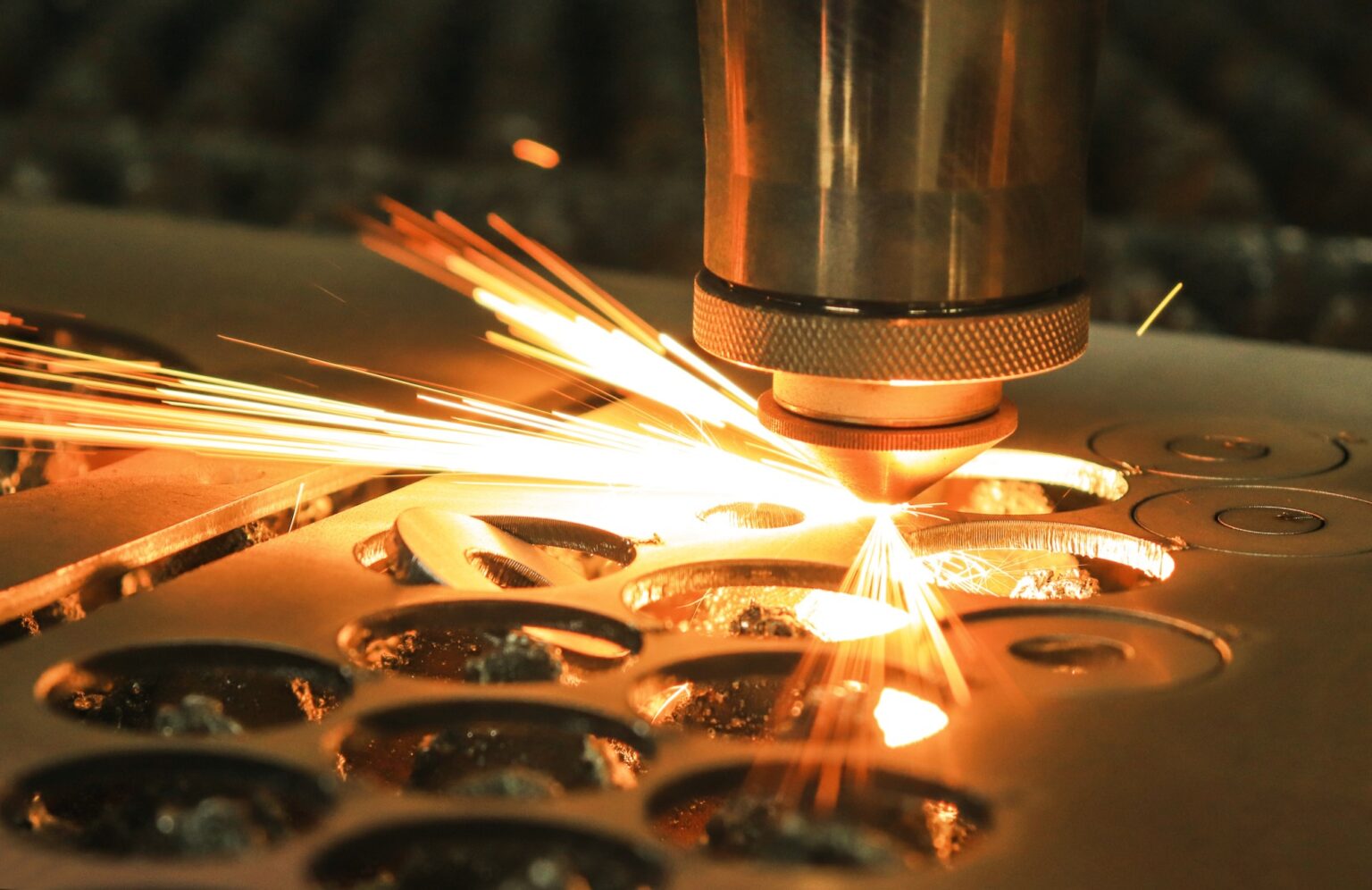Metalworking is a craft that dates back before people began to record history. Ancient cultures made use of crude tools to work their metals into jewelry. As time went on, the Bronze and Iron Ages saw metalworking expand, giving humans their first metal weapons.
The Industrial Age brought about a shift in metalworking. Machines allowed people to produce more metal products with more ease.
Today, lasers are part of metalwork too. Metalworkers can use laser markings to carve inscriptions and designs into their work. If you want to take your craft to the next level, you can incorporate lasers into your craft.
Here is what you need to know about the engraving process.
Table of Contents
What Are Laser Markings?

Laser markings are a way to create a lasting imprint on a metal surface. By using concentrated beams of light, a permanent metal engraving is created.
To create laser markings, fiber, pulsed, continuous wave, green, or UV laser machines are used. A wide array of laser marking applications can be employed with these machines, including annealing, carbon migration, discoloration, etching, and engraving.
Laser marking can be done manually or through automation. Some of the metals that receive laser markings are aluminum, steel, titanium, and copper. There are also others.
Products can have text carved into them, like serial numbers and part numbers. They can have barcodes, Unique ID Codes, and 2D Matrix codes etched into them too. Lasers can also carve images like a logo onto a product.
How Laser Marking Works
The word laser is is an acronym that stands for Light Amplification by the Stimulated Emission of Radiation. A laser starts as an atom that is stimulated to release particles of light. When this light receives concentration, it can laser mark a surface.
When the beam meets a surface, it alters its properties and appearance. Since lasers are focused beams of light, they create a precise and clean result. This creates high-quality marks with high contrast that can be seen on nearly any surface.
The precise nature of lasers makes them ideal for jobs that require accuracy.
Lasers are measured in wavelengths; the higher the wavelength, the more powerful the laser.
Lasers with low power, like UV lasers, make them ideal for heat-sensitive materials like plastic and glass. Higher wavelength lasers, like fiber lasers, are good for heat-resistant materials like titanium. This means that just about any material can be laser marked safely.
Laser marking is also great because it doesn’t use consumables like printing or labeling. Printed and labeled materials are not permanent either. As a plus, laser marking requires less maintenance than these other methods.
How Do Laser Engraving Machines Work?
The laser provides the beam for engraving. To assist with this process, a controller guides the laser beam. It helps facilitate the direction, intensity, movement speed, and spread of the beam on a surface.
The most common setup for laser machines is for the machine to move around while the material remains stationary. Some models have the laser remain stationary while the material moves around.
There are models where both the laser and the material remain stationary. These models use mirrors to guide the beam as the operator sees fit.
Most laser engraving machines have a design that only allows engraving flat surfaces. A machine with a rotary attachment works best for round or cylindrical objects.
Most laser engravers connect to a computer. Through software, the material for engraving converts into digital signals. This guides the laser in metal engraving and other operations.
Metal Engraving
Engraving machines can engrave a wide range of metals in many different shapes. This includes guns, coins, jewelry, and many more possibilities. Some laser machines can adjust their wattage output to handle metals with varying thicknesses.
The best type of laser for metal engraving is a fiber laser. Fiber lasers have a higher wattage output to handle thicker materials.
It is a good idea to paint or anodized metal before engraving it. Materials with smooth, reflective surfaces do not absorb laser beams well. Metal with paint or a coat will have an easier time absorbing the beam for engraving.
It’s also important to note to avoid the reflection of the laser on metallic surfaces.
Many companies use lasers to engrave their products for different reasons. For example, gun companies have to engrave their products for tracking purposes. Labels, serial numbers, QR codes, and other pertinent information are engraved on the gun to identify it if it is used.
Some gun owners can also get their gun engraved with a name or image for a personalized touch.
Jewelers also make use of lasers in their work. They use them to help them create custom pieces.
Necklaces, rings, pendants, and almost any other type of jewelry can go through the engraving process. Many people get names, numbers, and pictures engraved onto their jewelry.
A rotary attachment will be necessary to engrave jewelry with a curved surface.
Laser machines can do more than just engrave metal. You can also use them for annealing, etching, and color-changing through carbonization or bleaching.
Metal Plaque Engraving
When choosing the best material for outdoor plaque, it’s crucial to determine the intended use or application.
A typical application of metal plaques is memorial plaques. These plaques honor and remember someone’s good deeds, legacy, or contribution to the local community or society. Plaques have various applications, aside from memorial purposes.
Metal plaques can be made of stainless steel, the most suitable material for a marine or underwater plaque. Other materials in making plaques include bronze and brass.
The two types of metal plaques include cast and etched plaques. But how do these plaques differ? Here are the details of each kind of metal memorial plaque:
- Cast Plaques: Creating a cast plaque involves pouring molten metal, like bronze, into a mold, which solidifies once it cools. Cast plaques have raised graphics and lettering protruding from the plaque. The raised areas of cast plaques are more substantial than etched plaques. A typical example of cast plaque is cast bronze plaques, known for their superior durability.
- Etched Plaques: Chemical engraving process involves eating away a metal sheet to create a written text or graphic design. Etched plaques have shallow, recessed letters filled with black or colored paint. The etched plaque’s remaining areas retain the metal’s original color.
Your Construction Guide
Metalwork has gone through many changes since its inception. Lasers are one of the latest innovations in this field.
Laser markings provide a low-maintenance, sustainable method to mark metal. Fiber lasers are best for the job since they have the highest watt output to affect dense materials. Most lasers work best on flat surfaces, and an attachment will be necessary for curved materials.
If you found this article helpful, we invite you to check out some of our other resources. We provide lots of information on different facets of construction. If you run a business or you’re doing some work on your own, we have resources that can help you.





